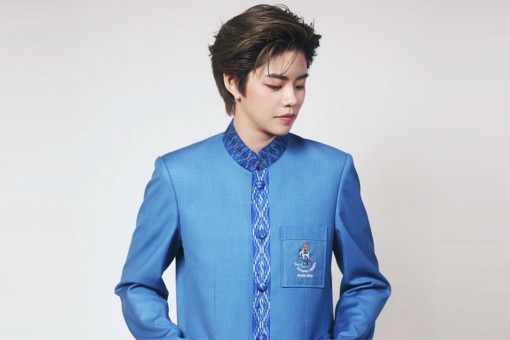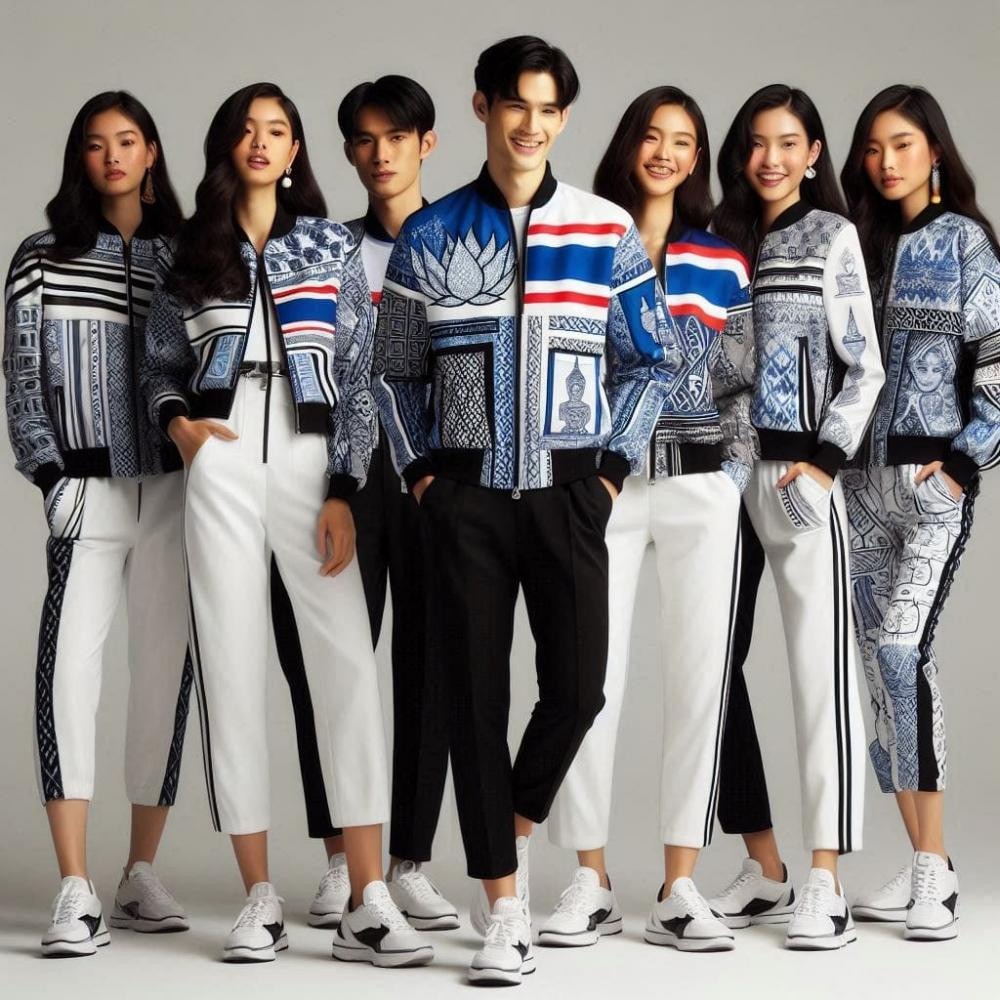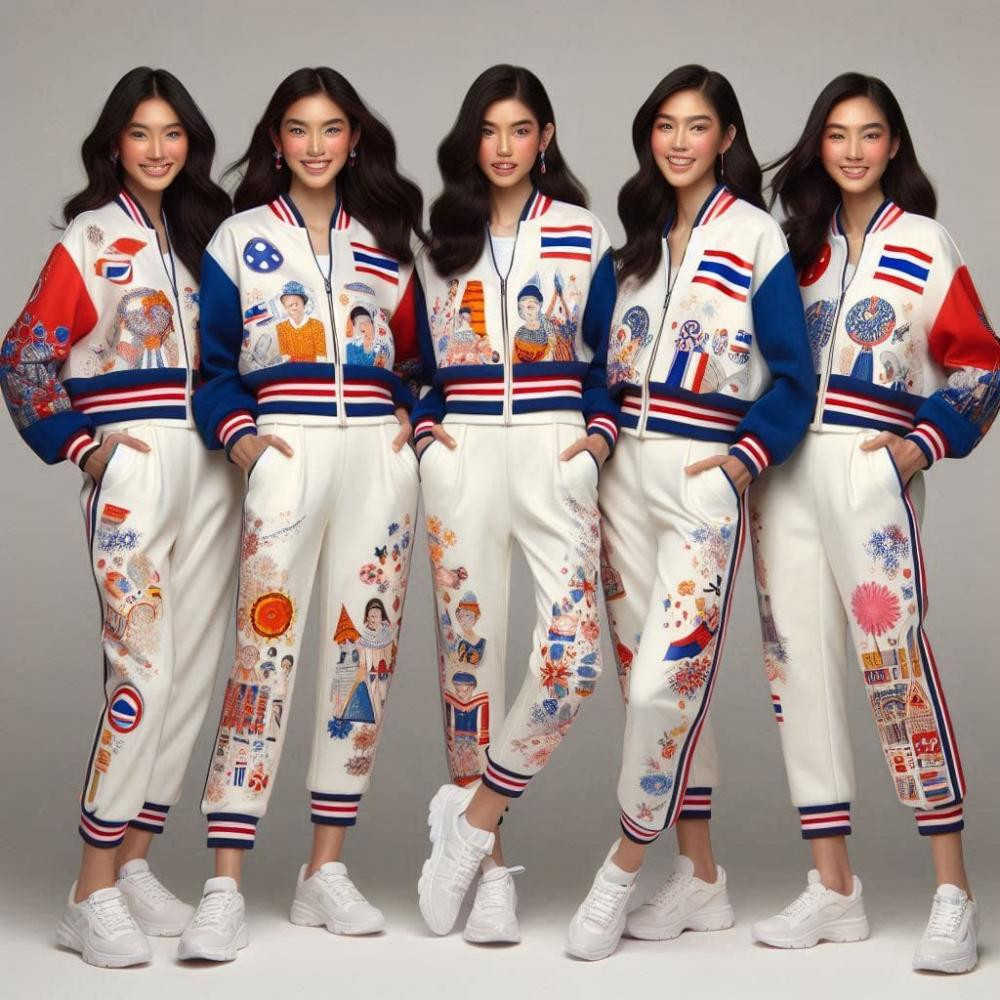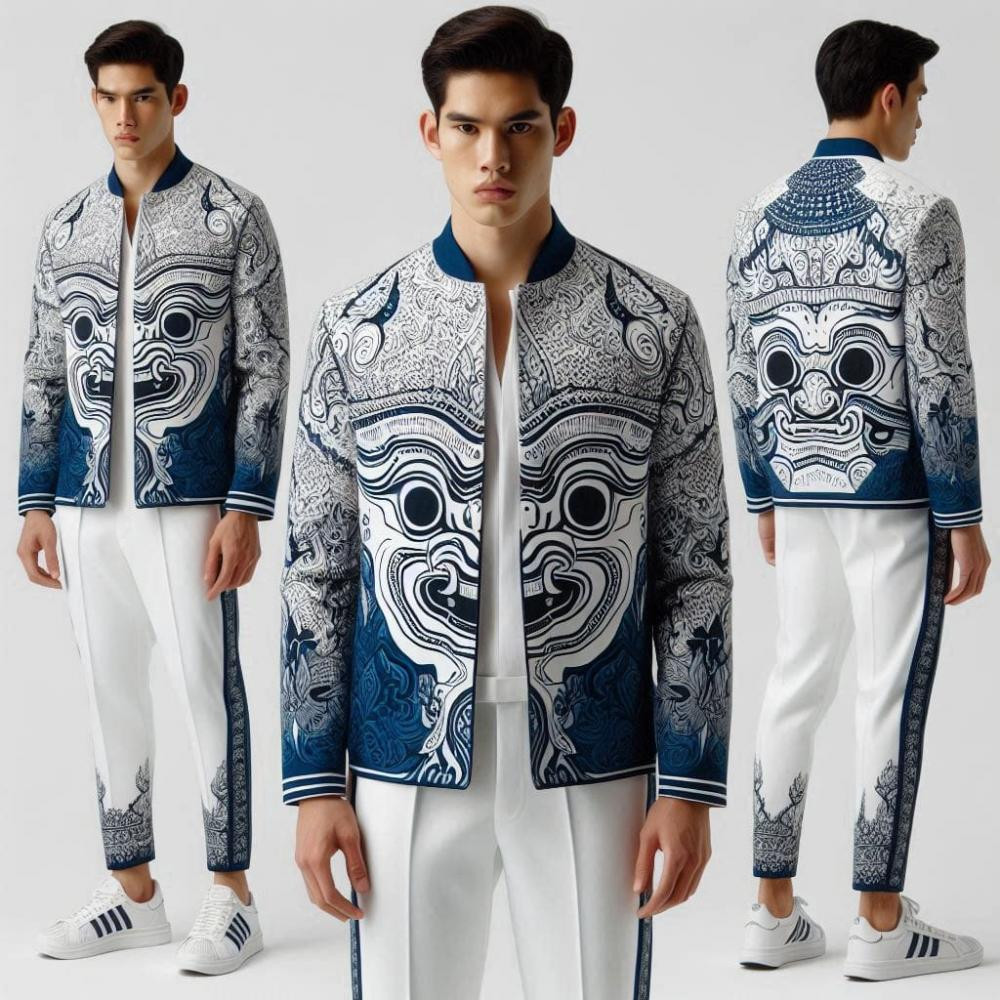The unveiling of the official uniform for Thai athletes at the Olympic Games 2024 in Paris has ignited a vigorous online discussion, with opinions sharply divided over its design.
 Thai badminton player Sapsiree Taerattanachai models a new outfit for Thai athletes competing at the Olympic Games 2024 in Paris. The outfit has received a mixed response. (Photo: Stadium TH Facebook Page)
Thai badminton player Sapsiree Taerattanachai models a new outfit for Thai athletes competing at the Olympic Games 2024 in Paris. The outfit has received a mixed response. (Photo: Stadium TH Facebook Page)
Modeled by prominent badminton player Sapsiree Taerattanachai, the Thailand Olympic Uniform is a striking blue ensemble crafted from Thai indigo-dyed silk. Launched on Stadium TH’s Facebook page, the attire immediately became a talking point, drawing both criticism and commendation from netizens. The core of the debate revolves around whether the design is perceived as outdated, with some expressing disappointment that it seemingly fails to project Thailand’s celebrated soft power. Conversely, others have lauded the uniform for its elegance and aesthetic appeal.
 Netizens use AI to create alternative Thailand Olympic uniform designs, examples posted by Facebook user Grace Anthony.
Netizens use AI to create alternative Thailand Olympic uniform designs, examples posted by Facebook user Grace Anthony.
 AI-generated modern and colorful Thailand Olympic uniform concepts shared on Facebook by Grace Anthony.
AI-generated modern and colorful Thailand Olympic uniform concepts shared on Facebook by Grace Anthony.
 Examples of AI-designed Thailand Olympic outfits with modern and colorful themes, shared on Facebook account Grace Anthony.
Examples of AI-designed Thailand Olympic outfits with modern and colorful themes, shared on Facebook account Grace Anthony.
Adding fuel to the fire, creative online users have employed Artificial Intelligence to generate alternative Thailand Olympic uniform concepts. A Facebook user named Grace Anthony showcased a range of vibrant and contemporary designs, which quickly went viral, garnering thousands of shares and further intensifying the discussion around the official attire.
Prime Minister Srettha Thavisin stepped into the debate to defend the Thailand Olympic uniform. He countered the criticisms of outdatedness by emphasizing the subjective nature of beauty, stating, “its beauty is in the eye of the beholder.” He urged respect for the designers and appealed to the public to avoid focusing on what he deemed a minor issue.
The Prime Minister further elaborated on the design inspiration through his own Facebook account, highlighting the incorporation of patterns from the Ban Chiang World Historical Site. He described the Thailand Olympic uniform as a fusion of Thai cultural legacy and international modernism. Mr. Srettha detailed the extensive research undertaken by the design team, including consultations with experts at Udon Thani Rajabhat University’s Fabric and Textile Creative Design Centre (FTCDC), the Ban Chiang National Museum, the Fine Arts Department, and local artisans who maintain traditional weaving and indigo dyeing techniques associated with Ban Chiang patterns.
He explained that this in-depth research informed the application of Ban Chiang patterns and indigo dyeing knowledge into the Thailand Olympic uniform design, aiming for a modern aesthetic suitable for a global stage. Furthermore, he pointed out the innovative use of recycled plastic bottle polo shirts as part of a commitment to environmental sustainability.
“The athletes’ uniform is more than just a costume; it represents the combination of the past and a sustainable future. It served as an inspiration for the new generation to preserve Thai culture while steadily moving forward,” Mr. Srettha affirmed.
However, amidst the design controversy, practical considerations have also emerged. Thana Chaiprasit, vice president of the Thai Olympic Committee, revealed that they are contemplating switching to tracksuits made by Thai company Grandsport. This potential change is driven by concerns that the current Thailand Olympic uniform material may not be suitable for the anticipated hot weather in France during the Olympic opening ceremony on July 26th. This adds another layer to the ongoing dialogue surrounding the Thailand Olympic uniform, blending design aesthetics with functional requirements for the athletes.
